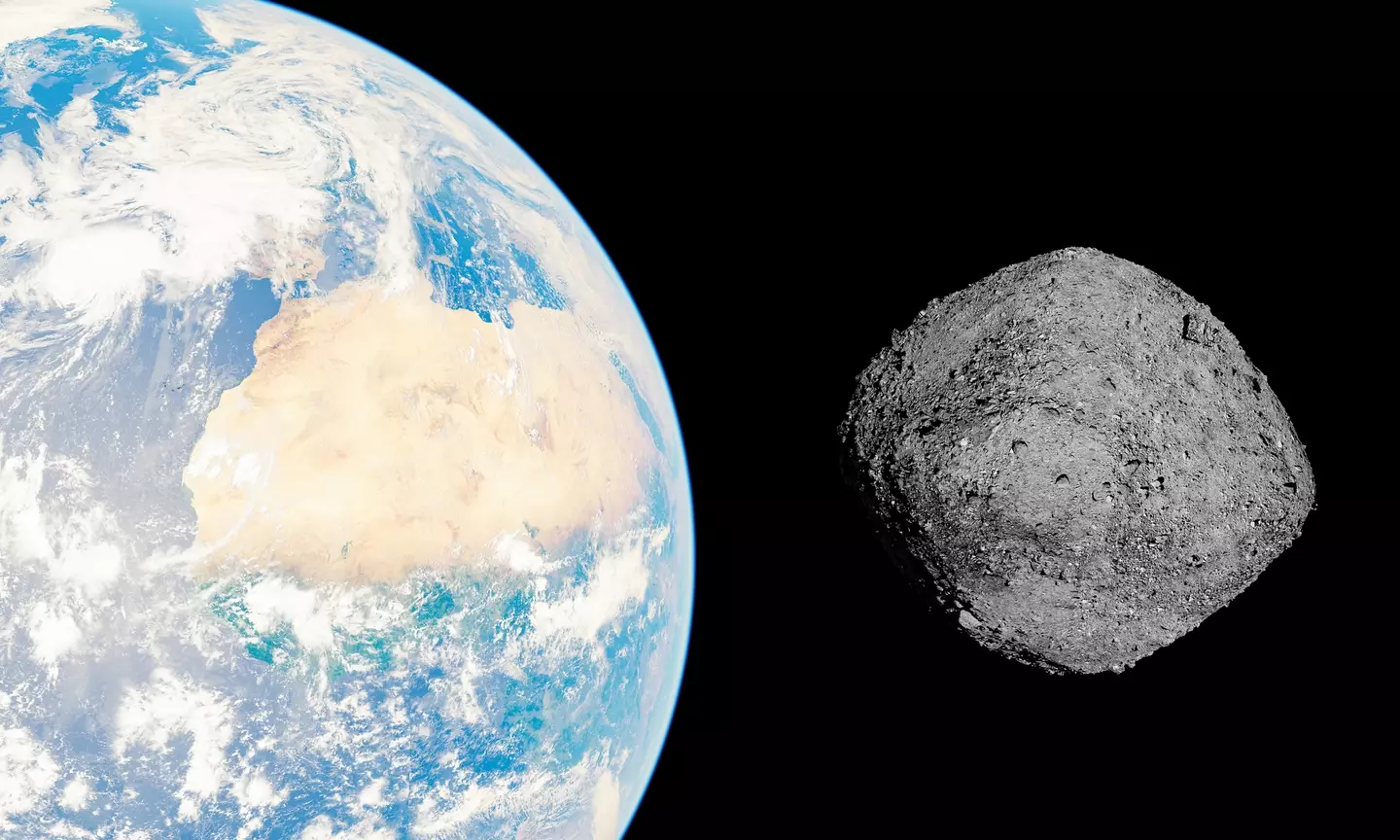A simulation has revealed what would happen if the Apophis asteroid collided with Earth.
99942 Apophis – also known as the ‘God of Chaos’ – is a peanut-shaped asteroid measuring a whopping 340 metres wide.
On 13 April, 2029, Apophis is set to pass by Earth within an estimated 20,000 miles (32,000 kilometres) of its surface.
It will pass over the Atlantic Ocean, travelling so quickly that it will take less than an hour to cross.

The asteroid is not expected to hit Earth (Getty Stock Image)
Now, it’s important to note that the asteroid isn’t expected to hit Earth, but a recent study has found that another object – which is 0.6 metres in length – could change this, although it’s unlikely.
Canadian astronomer Paul Wiegert and co-author Benjamin Hyatt looked into the odds of the asteroid colliding with another object, which essentially could cause it to hurtle towards our planet.
The study, published in The Planetary Science, found that the object could be enough to throw the asteroid off course, if it reached 3.4 metres in size.
And if this happens, it could collide with our planet at a later date.
Fortunately for us, the scientists say that the odds of this happening are ‘exceptionally low’ at around 2.7 percent. But what would happen if the asteroid did end up colliding with our planet?
How bad would it be?
Well, according to digital platform Cosmoknowledge, although Apophis wouldn’t be ‘a planet killer’ it ‘would ruin our day if it made contact’.
A simulation reveals that if it was to hit Earth, it would impact the planet with a kinetic energy equivalent to ‘1,000 mega tonnes of TNT, or tens to hundreds of nuclear weapons’.
It would not cause a threat to humanity as a whole, but it would cause ‘billions’ of deaths, as well as severe climate disruption.
“We would have to get out of the way if we could not stop it or change its trajectory,” they explain.
“A project of that magnitude would necessitate global cooperation as millions of people would become the first space refugees.
“Depending on the size, density, speed and angle of approach of the asteroid, such an evacuation may not be possible.”
NASA has weighed in on the potential event following investigations into the asteroid last year.
In a statement, the space agency said: “The intrigue of Apophis is its exceptionally close approach of our planet on April 13, 2029.
“Although Apophis will not hit Earth during this encounter or in the foreseeable future, the pass in 2029 will bring the asteroid within 20,000 miles (32,000 kilometres) of the surface – closer than some satellites, and close enough that it could be visible to the naked eye in the Eastern Hemisphere.
“Scientists estimate that asteroids of Apophis’ size, about 367 yards across (about 340 metres), come this close to Earth only once every 7,500 years.”




